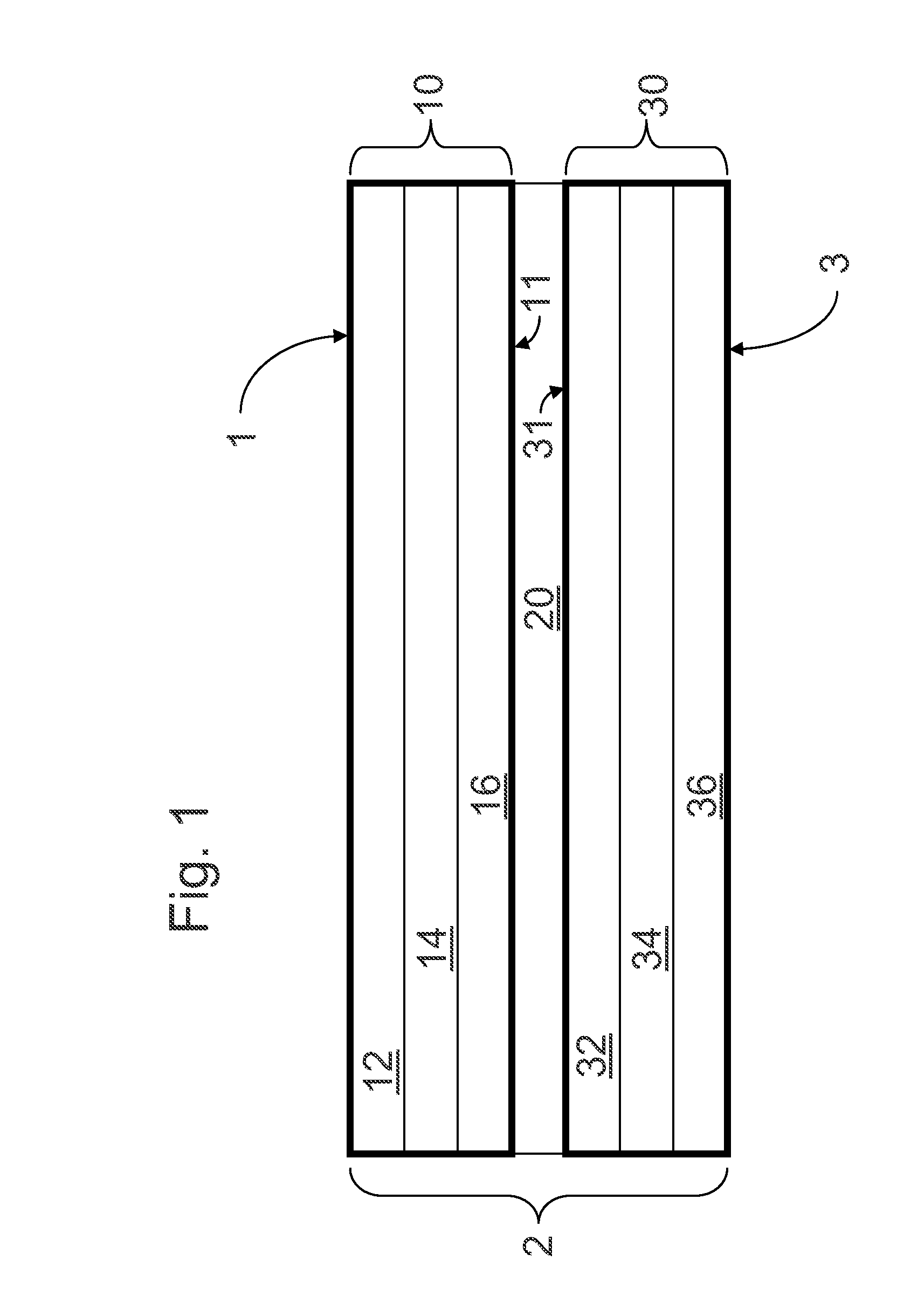Barrier Film for Use in Multilayer Thermoformable Materials and Shaped Articles and Containers Made Therefrom
a barrier film and thermoformable material technology, applied in the field of multi-polymer-layer thermoformable materials and shaped objects, can solve the problems of limiting the use of desirable polymer films in such containers, requiring costly sanitation procedures, time-consuming, and generating significant quantities of (usually liquid) waste materials, etc., to inhibit short-term permeation of liquid, reduce surface energy, flexibility and tensile strength sufficient
- Summary
- Abstract
- Description
- Claims
- Application Information
AI Technical Summary
Benefits of technology
Problems solved by technology
Method used
Image
Examples
Embodiment Construction
[0031]This disclosure relates generally to multiple-polymer-layer thermoformable materials and articles formed from such materials, such as open-top food service containers (i.e., not sealed pouches or packages). In particular, the disclosure relates to multi-layer (i.e., laminated) polymer films used as peelable and / or thermoformable layers for such materials and articles.
DEFINITIONS
[0032]An “odor-resistant polymer” is a polymer that substantially inhibits migration of a gas therethrough. The ability of a polymer to inhibit migration of a gas therethrough depends on the properties (e.g., chemical nature, thickness and density) of the polymer. These properties can be empirically determined, as is typically done by ordinarily-skilled artisans in this field (e.g., by measuring passage of the gas across a polymer membrane having controlled characteristics under controlled conditions, such as gas concentration and pressure differential across the membrane). By way of example, polyvinyl ...
PUM
| Property | Measurement | Unit |
|---|---|---|
| thickness | aaaaa | aaaaa |
| surface energy | aaaaa | aaaaa |
| density | aaaaa | aaaaa |
Abstract
Description
Claims
Application Information
 Login to View More
Login to View More - R&D
- Intellectual Property
- Life Sciences
- Materials
- Tech Scout
- Unparalleled Data Quality
- Higher Quality Content
- 60% Fewer Hallucinations
Browse by: Latest US Patents, China's latest patents, Technical Efficacy Thesaurus, Application Domain, Technology Topic, Popular Technical Reports.
© 2025 PatSnap. All rights reserved.Legal|Privacy policy|Modern Slavery Act Transparency Statement|Sitemap|About US| Contact US: help@patsnap.com



